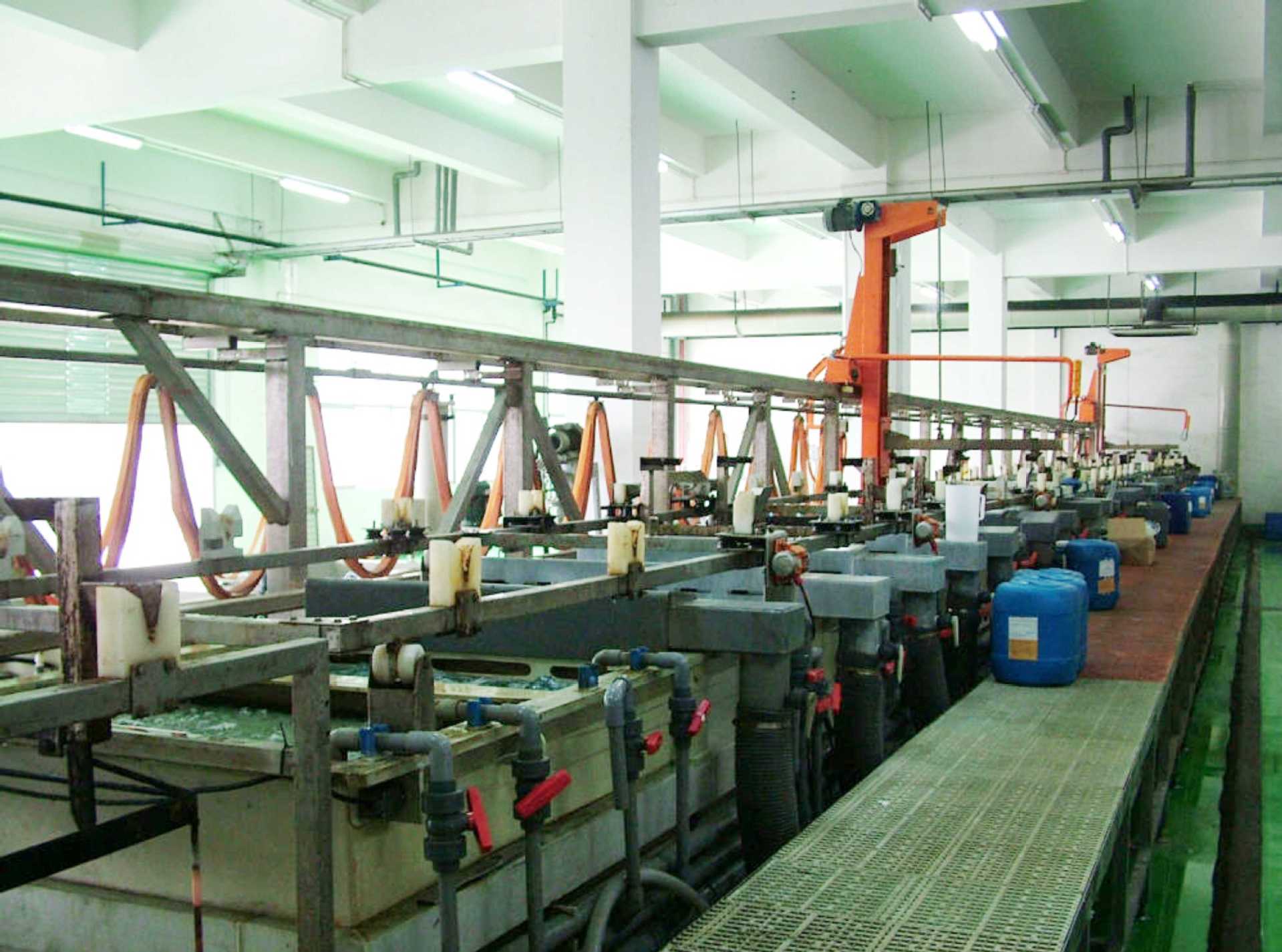Factors affecting the quality of electroplating coating – the performance of plating solution There are many kinds of coatings, and at the same time, there can be different types of plating solutions for depositing certain metals. Therefore, the composition of plating solutions for various plating types varies greatly, but the ideal plating solution should have the following properties:
(1) The cathodic reduction polarization of the deposited metal ions is relatively large to obtain a compact coating with small grain size and good adhesion.
(2) Stable and good conductivity.
(3) The speed of metal electrodeposition is high, and the loading capacity is also high.
(4) Low cost and low toxicity.
The bath formulations vary widely, but are generally composed of main salt, conductive salt (supporting electrolyte), complexing agent and some additives.
The main salt refers to the metal ion salt for deposition. The influence of the main salt on the coating is reflected in: the main salt concentration is high, the coating is rough, but the allowable current density is large; The concentration of main salt is low, and the allowable current density is small, which affects the deposition speed.
Generally, the electroplating process is required to be carried out at a high concentration of the main salt. Considering the solubility and other factors, the commonly used main salt is sulfate or chloride.
The role of conductive salt (supporting electrolyte) is to increase the conductivity of the plating solution and adjust the value, which can not only reduce the tank pressure and improve the dispersion ability of the plating solution, but also help improve the physical and chemical properties and anode performance of the plating solution.
In the single salt electrolyte, the crystallization of the coating is relatively rough, but it is cheap and the allowable current density is large. The complex salt electrolyte with complexing agent can improve the cathodic reduction polarization of metal ions, and the obtained coating is fine, compact and of good quality, but the cost is high.
For electroplating of Zn, Cu, Cd, Ag, Au, etc., the common complexing agent is cyanide; However, it is unnecessary to add complexing agents for electroplating of such metals as impact and other metals because the polarization of these elements is large during the electrodeposition of hydrated ions.
In the electroplating process of double salt electrolyte, cyanide free electroplating has become the development direction due to the high toxicity of cyanide.
Additives in the bath can not change the solution properties, but can significantly improve the performance of the coating. The influence of additives on the coating is reflected in that the additives can be adsorbed on the electrode surface, and can change the structure of the electrode solution interface double layer, so as to improve the overvoltage in the cathodic reduction process and change the slope of the T-curve.
The selection of additives is empirical. Additives can be inorganic or organic, usually referring to brighteners, leveling agents, wetting agents and activators.
The performance of the bath can affect the quality of the coating, and the bath is composed of solute and solvent, so the solvent should also have some influence on the quality of the coating.
Electroplating solution solvent must have the following properties: ① electrolyte is soluble in it; ② With high dielectric constant, the dissolved electrolyte can be completely or largely ionized into ions. Solvents used in electroplating include water, organic solvent and molten salt system.
1.Effect of electroplating process factors on coating
The influence of current density on the coating is mainly reflected in the high current density. It takes a short time to electroplating the coating of the same thickness, which can improve the production efficiency. At the same time, the high current density increases the number of crystal nuclei formed, and the coating crystal is fine and compact, but the current density is too large to produce dendritic crystals and pinholes. For electroplating process, there is an optimum range of current density.
The influence of electrolyte temperature on the coating is reflected in the rise of temperature, which can improve the current efficiency of cathode and anode, eliminate anode passivation, increase the solubility of salt and the conductivity of solution, and reduce concentration polarization and electrochemical polarization. However, if the temperature is too high, the growth rate of crystallization exceeds the growth point of crystallization activity, which leads to the formation of coarse crystals and porous coatings.
The stirring of electrolyte is conducive to reducing concentration polarization, obtaining compact coating and reducing hydrogen embrittlement. In addition, the use of electrolyte value, impulse current and commutation current also has a certain impact on the coating quality.
2.Anode
The anode also affects the coating quality during electroplating. Anodic oxidation generally goes through three steps: activation zone (metal dissolution zone passivation zone (passive film is generated on the surface) and over passivation zone (high valence metal ions are generated on the surface or oxygen is separated).
The anode shall be the same as the cathodic deposition species in electroplating. The electrolyte in the plating solution shall be selected to avoid passivation of the anode. During electroplating, the current density can be adjusted to keep the anode in the activated area.
If some anodes (such as Cr) can undergo severe passivation, inert anodes can be used.







 Nov. 09, 2021
Nov. 09, 2021 




